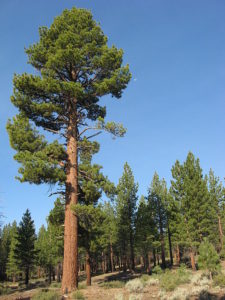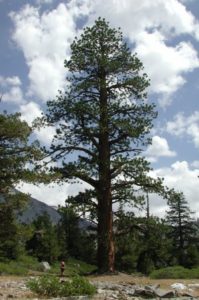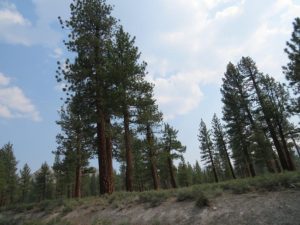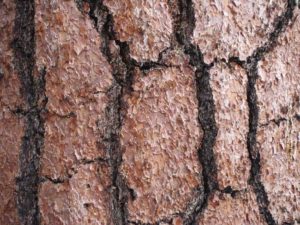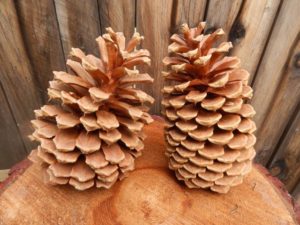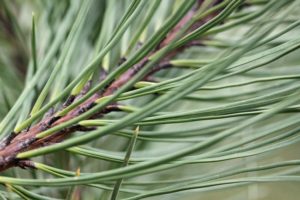Jeffrey Pine
Jeffrey pine is a species of conifers found in North America at an altitude of 1,500 to 2,900 m. These pine trees, named after the Scottish botanist John Jeffrey, slightly resemble Ponderosa pine though they can be differentiated based on their needles, buds, cones, and bark.
Scientific Classification
| Kingdom | Plantae |
| Division | Pinophyta |
| Class | Pinopsida |
| Order | Pinales |
| Family | Pinaceae |
| Genus | Pinus |
| Subgenus | Pinus |
| Scientific Name | Pinus jeffreyi |
Quick Information
| Other Names | Jeffrey’s Pine, Yellow Pine, Black Pine |
| Size | Height: 82 to 131 ft, seldom up to 174 ft Trunk Diameter: 7.5 ft |
| Identification | Leaves: Stout, needle-shaped, glaucous gray-green, occurring in bundles of three, 12-23 cm long Cones: Dark purple turning into pale brown, 12-24 cm long, thin woody scales |
| Tree Type | Evergreen |
| Shape at Maturity | Straight, crown is conical or rounded |
| Distribution/Range | South West Oregon, California including Sierra Nevada (United States); northern Baja California ( Mexico) |
| Hardiness Zones | 6 to 8 |
| Growth Rate | Rapid; 2-3 feet per year |
| Lifespan | Approximately, 400 to 500 years |
| Growing Conditions | Soil range: Sandy to clay loam, dry to moist Water requirement: Tolerates drought, can grow in places with little annual rainfall Sunlight: Requires full sun or partial shade Summer Condition: Warm summers with significant difference in day-night temperatures Winter Condition: Cold winters; cannot survive temperature below -38°F |
| Diseases | Vulnerable to fungal diseases, limb canker, rusts, western dwarf mistletoe, heart rots, medusa needle blight, elytroderma needle cast |
| Flowering/Fruiting | June or July |
| Seed Production | Bears seed at around 20 years of age |
| Dispersal of Seeds | Seeds are dispersed by the wind and small animals |
| Wildlife Value | Food and shelter for different bird and animal species; black bears, insects, birds, small mammals like mice, chipmunks, and tree squirrels consume the seeds |
| Uses | For lumber, pulpwood, and veneers; as an ornamental tree; its resin is used to treat various diseases |
| IUCN Conservation Status | Least Concern |
Interesting Facts
- Jeffrey pine tree has earned the Royal Horticultural Society’s Award of Garden Merit.
- Its cones have inward-pointing barbs whereas ponderosa pine cones have outward-pointing barbs that feel prickly when rubbed down on the palm.
- Its resin has a distinctive scent similar to butterscotch, vanilla, lemon, or pineapple.
References
Published on March 21st 2017 by Sajal Datta under Pine.
Article was last reviewed on 5th December 2024.


